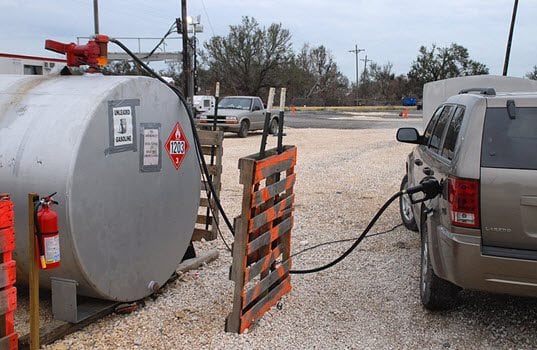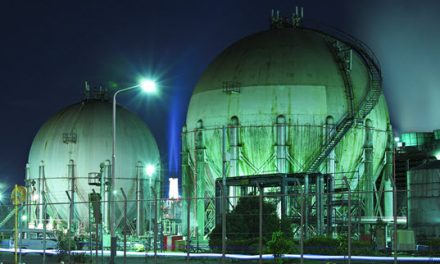By Keith Reid
Tropical storm Harvey and hurricane Irma showed not only how dangerous but how disruptive Mother Nature can be with natural disasters. Harvey caused at least 90 confirmed deaths and up to $200 billion in damage. Irma resulted in at least 134 deaths and a minimum of $50 billion in damage as it swept through Florida and other states in the Southeast.

Bernie Kavanagh
A variety of players throughout the industry were impacted. Retailers saw significant damage at their sites and loss of business. Marketers faced widespread disruptions. Yet, the industry pushed through and served their customers to the best of their abilities. One player contacted Fuel Marketer News with a story of how it helped facilitate municipal first responders and fleets during and after the hurricanes, and some disaster preparedness advice for commercial fleets.
WEX, as a fleet card provider, was positioned to act as a coordinator between its marketer and retailer partners and fleet operators. We interviewed Bernie Kavanagh, WEX’s SVP and general manager of North America large fleet and strategic relationships, to get some insight into the challenges faced and lessons learned.
FMN: These hurricanes have been the big news, but they are hardly unique where disaster is concerned.
Kavanagh: Obviously this time of year we’re talking a lot about hurricanes. You have fires that are happening on the West Coast. In a couple of months we’re going to start talking about ice storms. The Midwest is home to tornadoes that take out areas. So really there aren’t a lot of areas that couldn’t potentially be impacted by some sort of a natural disaster. It just becomes a matter of timing.
FMN: What is the most important factor going into one of these natural disasters?
Kavanagh: The lesson learned from these disasters is that you need to be able to procure product. That sounds simple, but when disaster hits all bets are off. Nobody’s calmly sitting at their desk on their computer deciding to change the limits that they might have on their fuel program. You need to be able to make a decision really quick—push one button and you’re done.
We work with all of our customers to create emergency fueling profiles. So looking down the Florida area three or four days in advance with a potential hit you push one button and profiles are moved over. Now they have whatever they needed, whether it’s unlimited access or anything like that. So they’re prepared for what could potentially hit.
FMN: How do you make sure those fleets get their emergency profiles fulfilled at the supply side?
Kavanagh: There are a couple of different ways to handle the supply piece. We have customers who are in the government space—federal agencies and states that use our program—and we have local municipalities with fire and police. We have ambulance operators. We’ve got tree trimming companies who have to get in and clear the brush. All of those people fall into a first responder bucket. You would like to think that there is a priority given at a retail fueling location. But that’s really hard to manage. It’s hard to have a consumer who might be trying to get the family out of harm’s way yield to a police vehicle. It is a difficult situation to balance.
What typically happens in impacted areas is you have emergency fueling programs that are put into place and you’re relying on folks that do bulk fueling or wet hosing/mobile fueling. And that has to be put in place well in advance. You’re not going to end up the day before Irma hits and say “Can I get a delivery of 8,000 gallons?” That’s not going to happen. So you work with them well in advance.
FMN: How deep does the pre-disaster planning go?
Kavanagh: There are lots of test runs. We’ll deploy mobile fueling trucks to certain locations just to make sure how quickly can they get there with new product and how quickly can they leave. How much product are they going to need? How are we moving product around?
We move product with the help of our partners between customers. In Houston we were working with one of our ambulance companies and it got to a point where they felt as though their work was done. They communicated back to us to say, “OK, you can release this truck now—we’re good.” And then we contacted the truck and rerouted it to the next company.
FMN: What technologies do you use to bring customers and suppliers together?
Kavanagh: We rely on data sources like mobile apps and social media and things of that sort. On the retail side we’ve got an app, WEX Connect, which normally helps people find the best price. Nobody’s really concerned with the price of gas in a natural disaster—they want to know who has fuel. But, with the app I know the station on the corner of 5th and Main just had a transaction one minute ago. So I know they’ve got product. I know they have power. I’m going to go there to get some fuel.
Another big part in this is trying to find out where the vehicles are, and not just necessarily fuel delivery trucks but also tracking where the customers are. You may have received a call in the morning that said they’ve set up a tent city and the parking lot of a mall and this is where we want our fuel delivered. Well, since the morning there might have been a change caused by a storm surge. Now, all of a sudden, that parking lot is under water. Maybe they couldn’t communicate with me and I didn’t know that they moved.
We can use telematics to figure out where those vehicles are—32 vehicles parked in a different parking lot. That’s where they moved. We can send the fuel truck over to them. So I’m using that telematics data to be able to deploy the fuel the resources to the right location.
FMN: You talked about using the app to identify who still has fuel and that touches on the retail impact of these events. A lot of these retailers are victims alongside their customers, with their canopies down and their forecourts under water.
Kavanagh: Yes, you’re right. We try to help our retail partners. We don’t own gas stations, we don’t control fuel pricing and we don’t control supply—that kind of stuff. There have been instances where you’ve got a site where the forecourt is under water and the water’s receded. So now they’re open again but maybe their POS devices are down and they want to start to accept you know transactions because they want to sell product. We’ve set up authorizations via phone. Another work around while somebody is in one of those situations so that we can get them back up and running as soon as possible.
FMN: This appears to be a highly flexible response. How do you keep financial track of the fuel?
Kavanagh: So the state of Florida is a customer of ours. They have a site that has fuel and they can use that. But they need Florida Power and Light to get in there and help them. So they may allow the Florida Power and Light Vehicle to fuel from their tank which makes all the sense in the world. Everybody is working together to solve this problem. But then after the fact how do you know who got fuel and how much came out of the state of Florida tank? That becomes an issue that nobody thinks about in the middle of a hurricane.
So we’ve worked with all of our mobile fuelers to make sure that they still capture the same level of data that you would at a normal retail location. The mobile fueling trucks are fitted with card readers or they have iPads and they’ve got card readers attached where they can still scan a fuel card and capture all the right level of data. That way we can still administer all of the billing and reporting to the appropriate folks while still allowing them to get the fuel that they need.
FMN: So far we’ve focused on the first responder types. I would imagine your regular fleet customers were riding the storm out, but then after the fact I’m sure they want to get back to normal operations. What challenges do they face?
Kavanagh: After the fact that you’re going to have some customers that might need to double or triple their routes or their volume of business because they’re part of a cleanup effort. There are things that we learn every day that you just don’t think about, like a uniform delivery company. People need to go do their jobs and maybe their facility just got flooded out that they don’t even have uniforms. So a uniform company gets busy. You likely never would have made that connection until you see it happening.
FMN: Hindsight is always 20/20. I would imagine as good of an ideas as it is to set up a disaster policy beforehand getting customers to commit the time and effort can be a challenge.
Kavanagh: Natural disasters are going to happen. It’s a when, not an if. And if you can put those controls in place, if you can secure a mobile fueling agreement or at least have the partner that has those connections, then it’s time well spent. When that time comes you’ve got something that didn’t cost anything to do it. You’re not on the outside looking in, scrambling to find somebody who can get some fuel or somebody who can answer a phone and trying to figure out how you can set a limit on your card, or raise a credit limit or do something that you hadn’t really even thought through. Our teams are starting to have conversations with our community as a reminder of the things that we just learned and the things that need to be put in place.
FMN: What’s your main takeaway from supporting such disaster relief efforts?
Kavanagh: Everybody bands together. What I what I really find interesting is when customers help customers, and it’s an honor helping bring people together.








